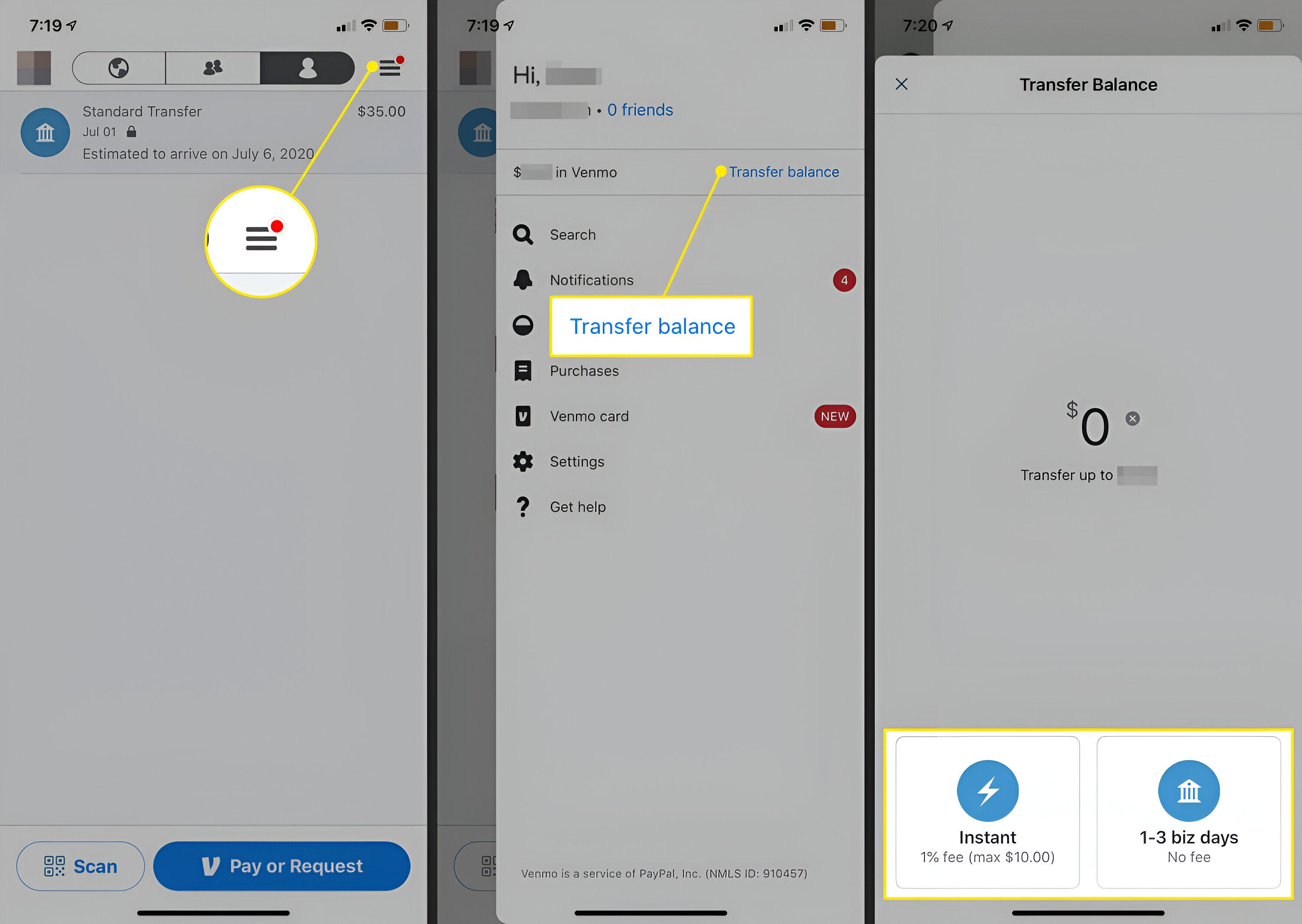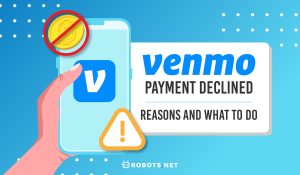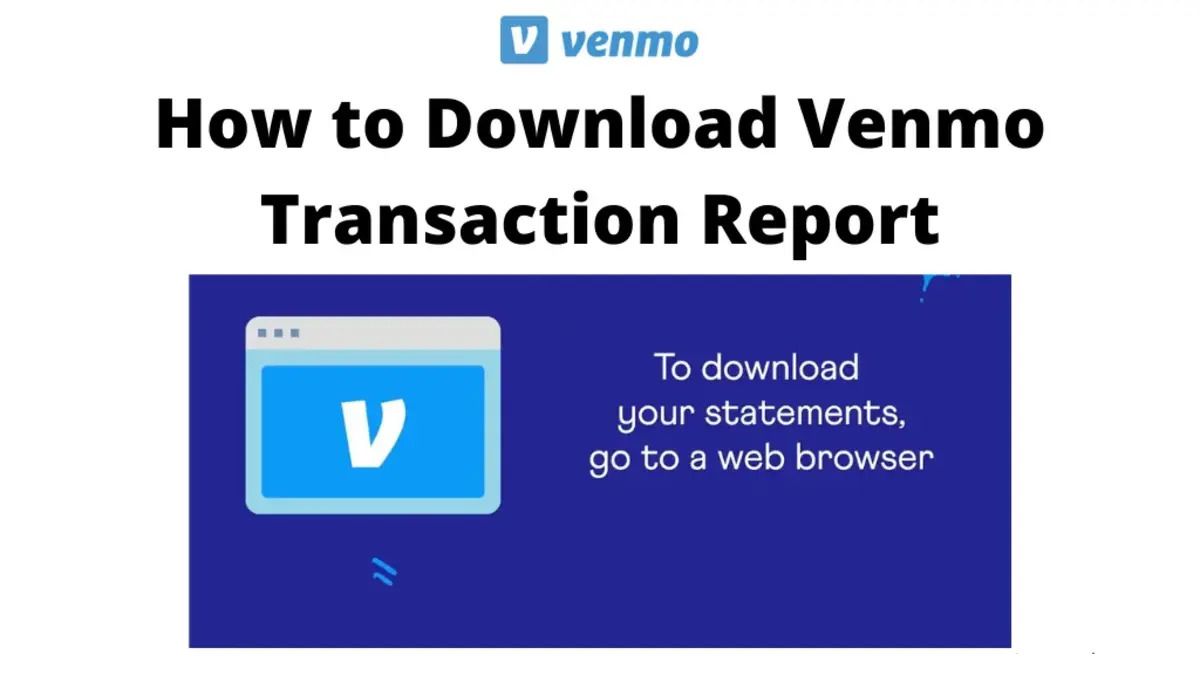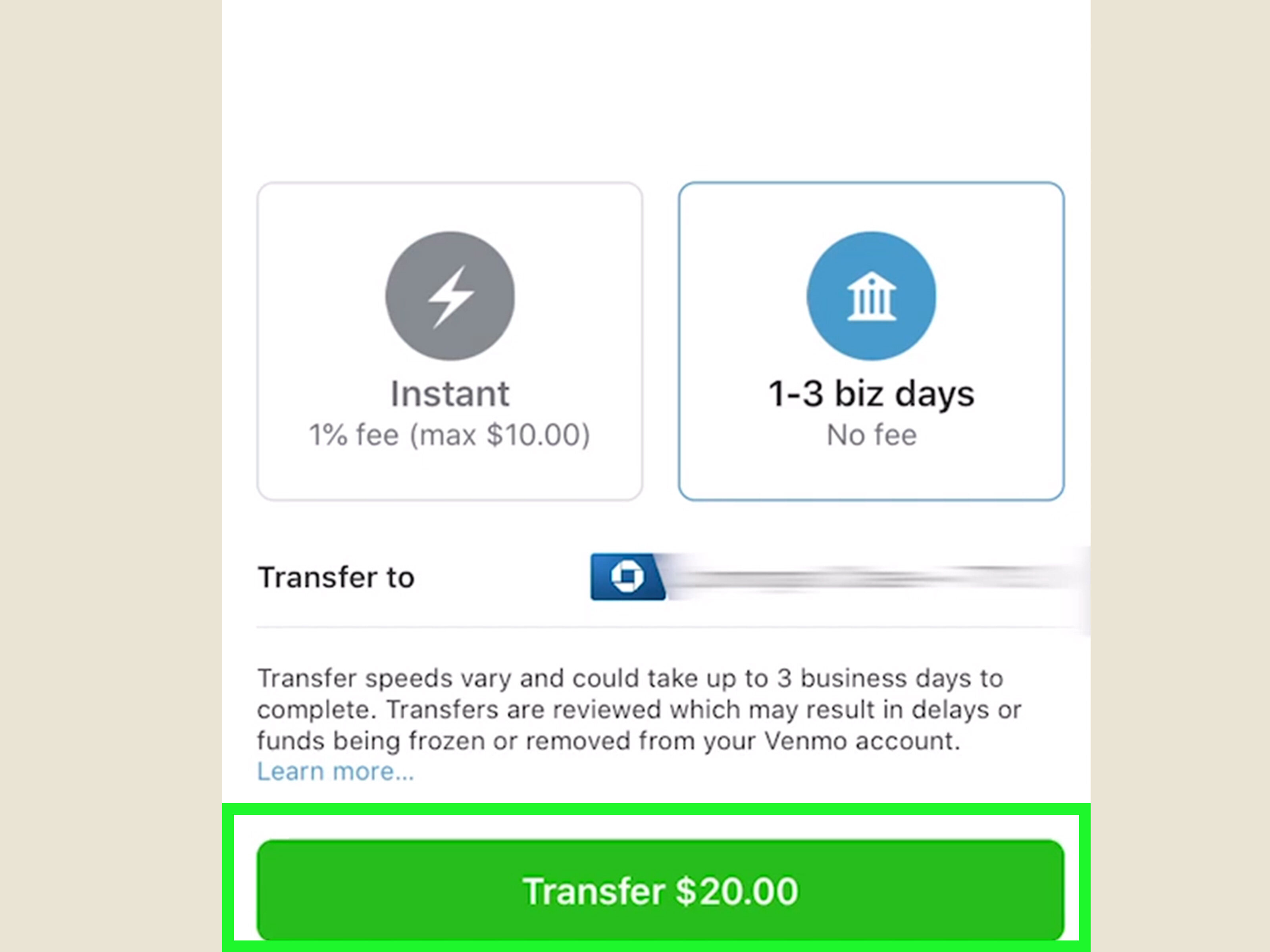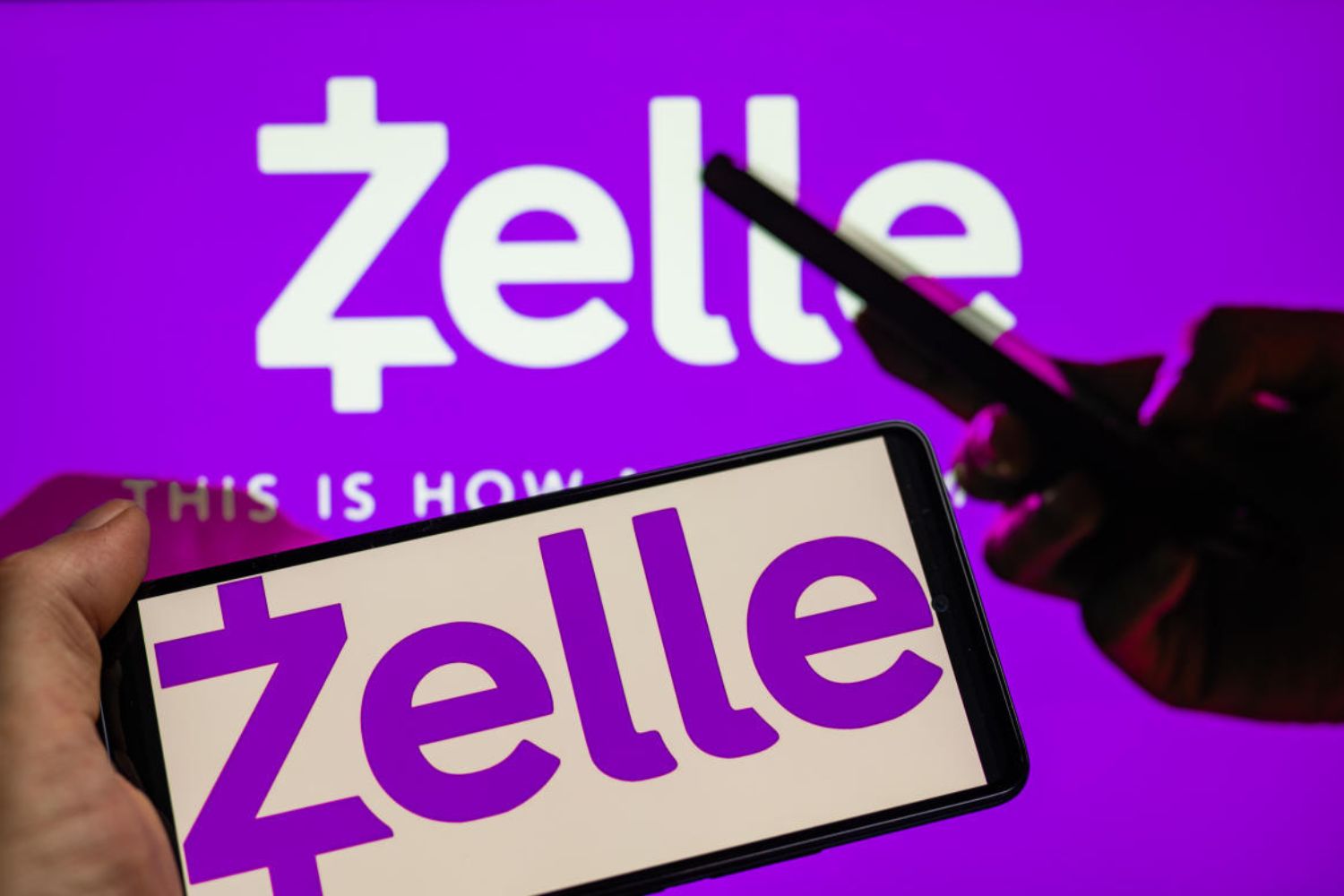Introduction
Welcome to your guide on Venmo, the popular mobile payment service that allows users to transfer money effortlessly. Whether you’re splitting the bill at dinner, reimbursing a friend, or paying for goods and services, Venmo provides a convenient and secure platform for handling transactions.
While Venmo simplifies the process of sending and receiving money, there may be instances when you encounter difficulties in transferring funds. In this article, we will explore some common reasons why you might be unable to transfer money in Venmo. Understanding these challenges can help you troubleshoot and resolve the issues effectively.
It’s important to note that Venmo has specific policies and guidelines in place to protect its users and maintain the integrity of the platform. Consequently, there may be restrictions or limitations on certain transactions based on various factors such as account verification, security concerns, or adherence to Venmo’s terms of service.
Now, let’s delve into the basics of Venmo and how it works before diving into the reasons behind potential transfer issues.
Venmo Basics
Before we dive into the intricacies of money transfers in Venmo, let’s take a moment to understand the foundation of the platform.
Venmo is a peer-to-peer payment service that allows users to send and receive money through a mobile app. It was founded in 2009 and gained popularity for its user-friendly interface and social media integration. Venmo is owned by PayPal, a well-established online payment platform.
To get started with Venmo, you need to create an account and link it to a valid bank account or debit card. This connection enables you to fund your Venmo account and transfer money to other users effortlessly. Additionally, Venmo offers the option of adding friends and contacts, making it easy to find and interact with people in your network.
One of the distinguishing features of Venmo is the social aspect it incorporates. Users have the ability to like and comment on transactions, creating a sense of connection and engagement with their peers. However, it’s important to note that these social interactions can be customized and controlled to maintain privacy and security.
When it comes to transferring money, Venmo offers two primary options: sending and requesting funds. Sending money allows you to initiate a transaction and transfer an amount to another Venmo user, while requesting money enables you to request payment from someone who owes you.
Transactions made within Venmo are typically free, with the exception of certain business transactions and expedited transfers. Additionally, Venmo provides a built-in level of security by utilizing encryption technology and offering options to protect your account with a PIN or biometric authentication.
Now that we have covered the basics of Venmo’s functionality, let’s explore the possible reasons why you might encounter difficulties when attempting to transfer money through the platform.
How Venmo Works
Venmo operates on a simple and intuitive process that allows users to transfer money seamlessly. Understanding the inner workings of Venmo can provide insights into the potential issues that may arise during a transaction.
When initiating a money transfer in Venmo, you have the option to choose between sending or requesting funds. To send money, you will need to enter the recipient’s Venmo username, email, or phone number. Once you specify the amount and purpose of the transaction, you can tap “Pay” to proceed with the transfer.
If you are owed money or need to request payment, you can create a payment request in Venmo by specifying the amount owed and providing a short description. Once the request is submitted, the recipient will receive a notification and can fulfill the payment by tapping the “Pay” button.
Venmo transactions can be funded using your Venmo balance, which consists of money that you have received from others or transferred from your linked bank account or debit card. Alternatively, you can choose to use a credit card, although it may incur additional fees.
Most Venmo transactions are processed instantaneously, allowing for immediate access to the funds. However, in some cases, it may take a bit longer for the money to reflect in the recipient’s Venmo balance, depending on the recipient’s bank or financial institution.
It is worth noting that Venmo provides a social feed feature where you can view and interact with your friends’ transactions. This feed can be customized to display only your own transactions or set to private mode to limit visibility to the public.
The ease of use and real-time transfer capability of Venmo have contributed to its widespread popularity. However, like any platform, there can be instances where users face challenges while attempting to transfer money. In the following sections, we will explore some of the common reasons for these difficulties and provide troubleshooting tips to help overcome them.
Reasons Why You Might Not Be Able to Transfer Money
While Venmo strives to provide a seamless money transfer experience, there are various reasons why you might encounter obstacles when attempting to transfer funds. Here are some common factors that may prevent you from completing a money transfer in Venmo:
- Insufficient Funds in Your Venmo Account: If your Venmo balance is insufficient to cover the transfer amount, the transaction may fail. Ensure that you have enough funds available in your Venmo account or linked bank account to complete the transfer.
- Technical Glitches or Server Issues: Like any digital service, Venmo can experience technical glitches or server outages. These issues can temporarily disrupt money transfer functionality and prevent transactions from going through. It is advised to wait and try again once the technical difficulties are resolved.
- Network Connectivity Problems: Poor internet connectivity or network issues can hamper the successful completion of a money transfer. Make sure you have a stable internet connection before initiating a transaction in Venmo.
- Pending Transactions or Holds on Your Account: If there are pending transactions or holds on your Venmo account, it can restrict your ability to transfer money. Check your transaction history and resolve any pending transactions or holds before attempting to transfer funds again.
- Violation of Venmo’s User Agreement or Policies: Violating Venmo’s user agreement, such as engaging in prohibited activities or fraudulent behavior, can result in restrictions on your account and hinder your ability to transfer money. Ensure that you are complying with Venmo’s policies to avoid any disruptions in money transfers.
- Verification or Security Issues: Venmo may require additional verification or security measures to ensure the integrity of transactions and user accounts. If there are any issues with your account verification or security, it can impact your ability to transfer money. Contact Venmo’s customer support for assistance in resolving these issues.
- Incorrect Payment Information or Account Details: Double-check the recipient’s information, such as their Venmo username, email, or phone number, to ensure accuracy. Incorrect payment information or account details can lead to failed transfers.
- The Recipient Blocks or Restricts Transactions: If the recipient has blocked or restricted transactions from your account, you will be unable to transfer money to them. In such cases, consider alternate payment methods or contact the recipient to resolve any issues.
- If Your Account is Limited or Frozen: Venmo may limit or freeze accounts due to suspicious activity or violation of their policies. If your account is limited or frozen, it can result in an inability to transfer money. Reach out to Venmo’s customer support to address and resolve any account issues.
As you can see, there can be various reasons why you might encounter difficulties when attempting to transfer money through Venmo. In the next section, we will provide some troubleshooting tips to help you overcome these challenges and successfully complete your money transfers.
Insufficient Funds in Your Venmo Account
One of the most common reasons why you might not be able to transfer money in Venmo is due to insufficient funds in your Venmo account. Before initiating a transaction, it is crucial to ensure that you have enough funds available to cover the transfer amount.
To check your Venmo balance, open the Venmo app and navigate to your account. You can view your balance on the home screen, which displays the current amount available in your Venmo account.
If you do not have enough funds to complete the transfer, you have a few options:
- Add Money to Your Venmo Account: Transfer funds from your linked bank account or debit card to your Venmo account to increase your available balance. To do this, tap on the “☰” icon in the top left corner of the app, select “Manage Balance,” and then click on “Add Money.” Follow the prompts to add funds to your Venmo account.
- Link an Additional Payment Method: If you have a credit card linked to your Venmo account, you can choose to use it as a payment method for the transfer. However, be aware that using a credit card may incur additional fees, so consider this option only if necessary and financially viable for you.
- Receive Money from Others: If you are expecting payments from others, waiting for those funds to be received in your Venmo account can help increase your available balance. Make sure to remind the sender to complete any pending payments or to send you the necessary funds to cover your transfer.
It is essential to keep track of your Venmo balance and ensure sufficient funds are available before initiating any money transfers. By managing your Venmo account balance effectively, you can avoid transfer failures due to insufficient funds and streamline your payment transactions.
In the next section, we will discuss another potential reason for failed money transfers – technical glitches or server issues.
Technical Glitches or Server Issues
Technical glitches or server issues can occasionally arise in any digital platform, including Venmo. These issues can affect the smooth processing of transactions and may result in failed money transfers.
If you encounter technical glitches or server issues while trying to transfer money in Venmo, here are some steps you can take to address the problem:
- Check for App Updates: Ensure that you have the latest version of the Venmo app installed on your device. Developers regularly release updates to address bugs and improve the performance of the app. Updating the app can often resolve any technical issues you may be experiencing.
- Restart the App: Close the Venmo app completely and restart it. This simple step can refresh the app’s resources and resolve minor glitches that might be interfering with money transfers.
- Check Venmo’s Status: Visit the Venmo status page or check social media platforms to see if there are any known issues or service disruptions with Venmo’s servers. If there is a widespread outage or technical problem, it is best to wait until the issue is resolved before attempting to transfer money again.
- Contact Venmo Support: If you have tried the above steps and are still experiencing technical glitches or server issues, reaching out to Venmo’s customer support can provide further assistance. They can guide you through any potential troubleshooting steps specific to your situation and help resolve the problem.
Remember that technical glitches or server issues are typically temporary and can be resolved with a little patience. It is advisable to wait and try again later if you experience these issues during a money transfer in Venmo.
In the next section, we will explore another potential reason for failed money transfers – network connectivity problems.
Network Connectivity Problems
Network connectivity problems can pose a significant obstacle when attempting to transfer money in Venmo. If you are experiencing issues with your internet connection or network, it can hinder the successful completion of your money transfer transaction.
To troubleshoot network connectivity problems and ensure a stable connection for your Venmo transactions, consider the following steps:
- Check Your Internet Connection: Verify that you are connected to a reliable and secure Wi-Fi network or have a stable cellular data connection. Unstable or weak internet connections can cause disruptions during the money transfer process.
- Restart Your Device: Sometimes, a simple restart can resolve network connectivity issues. Turn off your device, wait a few moments, and then power it back on. This action can refresh your device’s network settings and potentially resolve any connectivity problems.
- Move Closer to Your Wi-Fi Router: If you are using a Wi-Fi network, ensure that you are within range of the router. Being too far from the router can weaken the signal strength, leading to slower internet speeds and potential connection issues.
- Try a Different Network: If possible, switch to a different Wi-Fi network or cellular data network to see if the problem persists. This step can help determine if the issue lies with your current network or device.
- Reset Network Settings: If all else fails, you can try resetting your device’s network settings to default. This action will remove any saved Wi-Fi networks and settings, so you will need to reconnect to your preferred network. Consult your device’s user manual or online resources to learn how to reset network settings.
By following these troubleshooting steps, you can address network connectivity problems and ensure a reliable internet connection for your Venmo money transfers.
In the next section, we will discuss another potential reason why you might encounter difficulties in transferring money – pending transactions or holds on your account.
Pending Transactions or Holds on Your Account
Pending transactions or holds on your Venmo account can prevent you from successfully transferring money. These pending transactions or holds may be due to various factors, such as recent activity on your account or specific actions you’ve taken within the Venmo app.
If you are unable to transfer money in Venmo due to pending transactions or holds, here are some steps you can take to resolve the issue:
- Review Your Transaction History: Check your transaction history in the Venmo app to identify any pending transactions or holds on your account. If you see any transactions that are still processing or marked as pending, it is essential to allow them to complete before attempting another transfer.
- Wait for Holds to Release: In some cases, Venmo places temporary holds on funds to verify account activity or ensure transaction security. These holds can last for a set period, typically a few business days. It’s important to wait for these holds to be released before attempting to transfer the corresponding funds.
- Contact Venmo Support: If you believe that there are incorrect or excessive holds on your account, or if pending transactions are not completing as expected, reach out to Venmo’s customer support. They can provide further insight into the specific holds or pending transactions and assist in resolving any related issues.
- Ensure Sufficient Available Funds: If you have pending transactions or holds on your Venmo account, make sure you have sufficient available funds to cover the transfer amount in addition to any pending or held funds. This ensures that you have enough balance to complete the transfer without encountering any transaction failures.
By closely monitoring your transaction history, allowing pending transactions to complete, and contacting Venmo support if needed, you can navigate through any holds or pending transactions that may be affecting your ability to transfer money.
In the next section, we will explore another potential reason for failed money transfers in Venmo – violation of Venmo’s user agreement or policies.
Violation of Venmo’s User Agreement or Policies
One possible reason why you might not be able to transfer money in Venmo is if you have violated Venmo’s user agreement or policies. Venmo has specific guidelines in place to ensure the security, integrity, and proper use of its platform. If you engage in activities that violate these policies, it can lead to restrictions on your account and hinder your ability to transfer money.
Here are some common actions that may result in account restrictions or limitations:
- Fraudulent Activity: Engaging in fraudulent transactions or attempting to deceive other users can lead to severe consequences, including account suspension or termination. Venmo takes fraud prevention seriously and actively monitors accounts for suspicious activity.
- Prohibited Transactions: Venmo has policies in place regarding the types of transactions that are allowed on its platform. Engaging in prohibited transactions, such as purchasing illegal goods or services, can result in account restrictions.
- Money Laundering: Using Venmo to facilitate money laundering activities is strictly prohibited. This includes attempting to disguise the source or destination of funds, or engaging in suspicious or unexplained transactions.
- Harassment or Unauthorized Use: Harassing or engaging in unauthorized use of Venmo accounts is a violation of the platform’s policies. This includes actions such as attempting to gain unauthorized access to another user’s account or sending unsolicited messages or requests.
- Violation of Privacy: Respecting the privacy of other Venmo users is crucial. Sharing personal information without consent or violating the privacy of others can result in account restrictions or other penalties.
- Multiple Account Abuse: Creating and using multiple accounts for deceptive purposes or to evade account restrictions is not allowed. Venmo restricts users to one account unless explicitly stated otherwise.
If you believe that your Venmo account has been restricted or limited due to a violation, it is essential to reach out to Venmo’s customer support. They can provide clarification on the specific issue and guide you through the necessary steps for resolving the situation.
Understanding and abiding by Venmo’s user agreement and policies are crucial for maintaining a smooth and uninterrupted money transfer experience.
In the next section, we will explore another potential reason why you might face difficulties in transferring money – verification or security issues.
Verification or Security Issues
Verification and security measures play a vital role in maintaining the integrity of the Venmo platform. If there are any issues with your account verification or security, it can impact your ability to transfer money smoothly.
Here are some common verification or security issues that may prevent you from transferring money in Venmo:
- Account Verification: Venmo may require users to go through a verification process to ensure the legitimacy of their accounts. If your account is not fully verified or if there are outstanding verification steps, it can restrict your ability to transfer money. Make sure you have completed all necessary verification steps outlined by Venmo to remove any restrictions.
- Account Security Concerns: In cases where there is suspicion or evidence of unauthorized access or compromised security on your Venmo account, additional security measures may be put in place. This can include requiring password resets, two-factor authentication, or account reviews. Cooperate with Venmo’s security protocols to resolve any security-related issues.
- Unusual Account Activity: Unusual account activity, such as a sudden increase in transactions or inconsistencies in your payment behavior, can trigger security flags on your account. In such cases, Venmo may temporarily restrict certain functions, including money transfers, while conducting a review of your account. Reach out to Venmo’s support for guidance on resolving any account activity-related issues.
- Change in Personal Information: If there have been recent changes to your personal information, such as your name, address, or contact details, it can trigger account security measures. Ensure that you update your information accurately within the Venmo app to avoid any transaction limitations or restrictions.
- Unauthorized Device Access: If Venmo detects unauthorized access from a new or unrecognized device, it may prompt additional security measures. You may need to verify your identity or confirm your account ownership through email, phone verification, or other methods to regain full access and resume money transfers.
- Review of High-Risk Transactions: Certain transactions, especially those involving large amounts or flagged as high risk, may require manual review by Venmo’s security team. This review process can temporarily impede the completion of money transfers. Patience is required while Venmo conducts its necessary checks.
If you encounter verification or security issues that prevent you from transferring money in Venmo, it is best to contact Venmo’s customer support for assistance. They can provide guidance, verify your account status, and help you navigate through any necessary steps to resolve the issue.
In the next section, we will explore another potential reason for failed money transfers – incorrect payment information or account details.
Incorrect Payment Information or Account Details
One common reason why you might encounter difficulties when attempting to transfer money in Venmo is due to incorrect payment information or account details. It is crucial to ensure that the information you enter during the transfer process is accurate to prevent any transaction failures.
Here’s what you can do to address issues related to incorrect payment information or account details:
- Double-Check Recipient Information: Before initiating a money transfer, verify that you have entered the correct Venmo username, email, or phone number of the recipient. Any discrepancy in this information can result in the transfer being sent to the wrong person or the transaction failing.
- Verify Account Details: Ensure that the account details associated with your own Venmo account are accurate. This includes your linked bank account or debit card information. Outdated or incorrect account details can lead to transfer failures or rejection of funds.
- Communicate with the Recipient: If you are experiencing issues with transferring money to a specific individual, reach out to them to confirm the payment information they have provided. They may have accidentally given you incorrect or outdated details, which can be easily rectified by updating the information during the transfer process.
- Update Your Payment Preferences: Regularly review and update your payment preferences within the Venmo app. This includes ensuring that your default payment method, such as your linked bank account or debit card, is up to date. Outdated payment preferences can cause transfer failures or delays.
- Reach Out to Venmo Support: If you have double-checked the payment information and account details and are still experiencing difficulties with the transfer, it is advisable to contact Venmo’s customer support for assistance. They can help troubleshoot the issue and provide further guidance based on your specific situation.
By taking the time to verify and double-check payment information and account details, you can minimize the chances of encountering transfer issues due to incorrect data. Accurate and up-to-date information ensures a smooth and successful transfer process in Venmo.
In the next section, we will explore another potential reason why you might face difficulties in transferring money – the recipient blocking or restricting transactions.
The Recipient Blocks or Restricts Transactions
An important factor to consider when you encounter difficulties transferring money in Venmo is whether the recipient has blocked or restricted transactions from your account. Recipients have the ability to control who can send them money and may choose to block or restrict certain users.
If you find that you are unable to transfer money to a specific recipient, here are some steps to address the issue:
- Confirm Through Communication: Reach out to the recipient and inquire if they have blocked or restricted transactions from your account. There might be a specific reason for this action, such as a misunderstanding or a need for clarification. Clear communication can help resolve the issue.
- Respect the Recipient’s Decision: If the recipient has intentionally blocked or restricted transactions from your account, it is important to respect their choice. It’s possible that they have their reasons for doing so, and it is their prerogative to control their Venmo transactions. In such cases, consider alternative methods of payment or explore other options.
- Confirm Payment Preferences: Double-check your own payment preferences and account settings to ensure they are not causing the inability to transfer money. Verify that your own account is not restricting or blocking transactions unintentionally. Adjust any relevant settings as needed.
- Consider Alternate Payment Methods: If the recipient continues to block or restrict transactions from your Venmo account, explore alternative payment methods to complete the transfer. This can include using other digital payment platforms, traditional methods like checks or cash, or engaging in a conversation to find a mutually agreed-upon solution.
- Resolve Any Issues: If there are specific issues or misunderstandings with the recipient that have led to the block or restriction, communicate openly and resolve any problems. By addressing and resolving concerns, you may be able to reinstate the ability to transfer funds through Venmo.
Remember that individuals have the autonomy to control their Venmo transactions and can choose to block or restrict certain users as they see fit. It is important to respect their decision and explore alternative options when necessary.
In the next section, we will explore another potential reason for failed money transfers – if your account is limited or frozen.
If Your Account is Limited or Frozen
If you are experiencing difficulties transferring money in Venmo, it is possible that your account may be limited or frozen. Venmo takes measures to ensure the security and compliance of their platform, and they may restrict or freeze accounts that exhibit suspicious activity or violate their user agreement.
If you suspect that your account is limited or frozen, here are some steps you can take to address the issue:
- Contact Venmo Customer Support: Reach out to Venmo’s customer support to inquire about the status of your account. They can provide information on any limitations or freezes imposed on your account and guide you through the necessary steps to resolve the issue.
- Comply with Verification Requirements: If your account is limited or frozen due to verification concerns, ensure that you follow all the verification requirements outlined by Venmo. This may involve providing additional documentation or information to confirm your identity and resolve any security concerns.
- Resolve Any Policy Violations: If your account has been restricted due to policy violations, review Venmo’s user agreement and policies to understand the specific violation. Take the necessary steps to rectify the situation, such as ceasing prohibited activities or resolving any outstanding issues.
- Cooperate with Investigations: In certain cases, if your account is limited or frozen due to ongoing investigations or suspicious activity, it is essential to cooperate fully with Venmo’s security team. Respond promptly to any requests for information or documentation to expedite the resolution process.
- Follow Account Recovery Procedures: Venmo may have specific procedures in place for account recovery in the event of a limitation or freeze. Familiarize yourself with these procedures and follow them diligently to regain access to your account.
It is important to note that account limitations or freezes are implemented by Venmo to protect users and maintain the integrity of their platform. By cooperating with Venmo’s customer support team and following the necessary steps, you can work towards resolving any account-related issues and regain the ability to transfer money in Venmo.
Next, we will provide you with some helpful troubleshooting tips to overcome common issues related to money transfers in Venmo.
Troubleshooting Tips
When encountering difficulties in transferring money through Venmo, there are several troubleshooting tips you can try to overcome common issues. These tips can help you resolve minor problems and ensure a smooth money transfer experience:
- Update the Venmo App: Ensure that you have the latest version of the Venmo app installed on your device. Developers regularly release updates that address bugs and improve app performance.
- Check Your Internet Connection: Verify that you have a stable internet connection. Unstable or slow connectivity can hinder the successful completion of money transfers.
- Restart the Venmo App: Close the Venmo app completely and then reopen it. This action can refresh the app’s resources and resolve minor glitches.
- Clear App Cache: If you are experiencing persistent issues, clearing the Venmo app cache can help. Go to your device’s settings, find the app settings for Venmo, and clear the cache.
- Verify Recipient Information: Double-check the recipient’s Venmo username, email, or phone number to ensure accuracy. Incorrect recipient details can lead to failed transfers.
- Review Transfer Limits: Confirm that you are within the transfer limits set by Venmo. Venmo imposes transaction limits for security and compliance purposes, and exceeding these limits can result in transfer failures.
- Monitor Account Activity: Regularly review your transaction history and account activity for any suspicious or unauthorized transactions. Report any suspicious activity to Venmo’s customer support immediately.
- Contact Venmo Support: If you have tried the troubleshooting tips and are still unable to transfer money, don’t hesitate to reach out to Venmo’s customer support. They can provide specific guidance and assistance based on your account and situation.
By following these troubleshooting tips and taking the necessary steps, you can resolve common issues and ensure a smoother money transfer experience in Venmo.
Now that you are equipped with troubleshooting knowledge, you can navigate through potential obstacles and resolve issues that might arise during your Venmo transactions.
Conclusion
Venmo offers a convenient and user-friendly platform for transferring money, but there can be instances when you encounter obstacles during the transfer process. Understanding the potential reasons for these difficulties and implementing the troubleshooting tips provided can help you overcome these challenges and ensure successful money transfers in Venmo.
From insufficient funds to technical glitches, network connectivity issues to verification problems, there are various factors that can impact your ability to transfer money in Venmo. By double-checking payment information, verifying account details, and addressing any account limitations or freezes, you can tackle many of the common issues head-on.
When troubleshooting, it’s important to remember to comply with Venmo’s user agreement and policies and respect the recipients’ decisions regarding transactions. Clear communication and cooperation with Venmo’s customer support can also be valuable in resolving any issues that may arise.
By following the troubleshooting tips provided and staying vigilant in monitoring your account activity, you can enjoy a smoother and more seamless experience when transferring money through Venmo.
Remember, if you encounter persistent problems or have further questions, don’t hesitate to reach out to Venmo’s customer support for assistance tailored to your specific situation. They are there to help you navigate through any challenges and ensure that your money transfers in Venmo are successful and worry-free.







